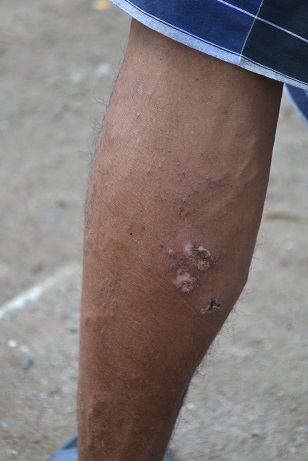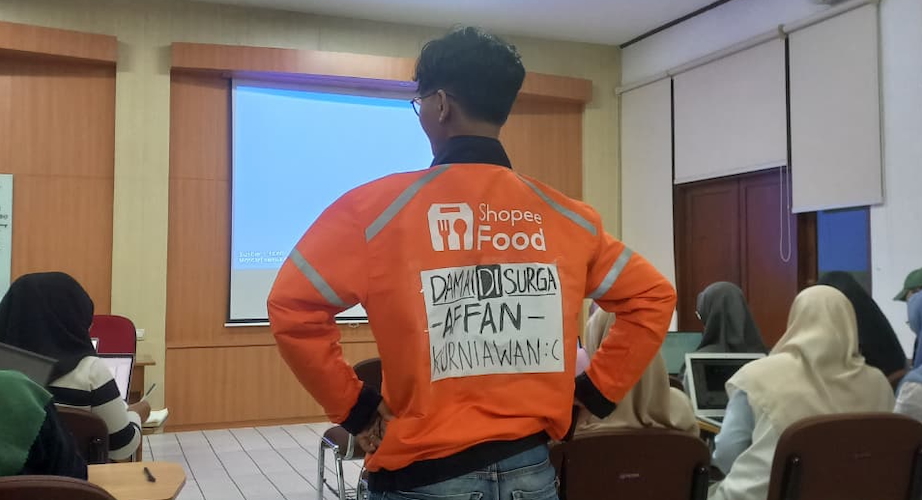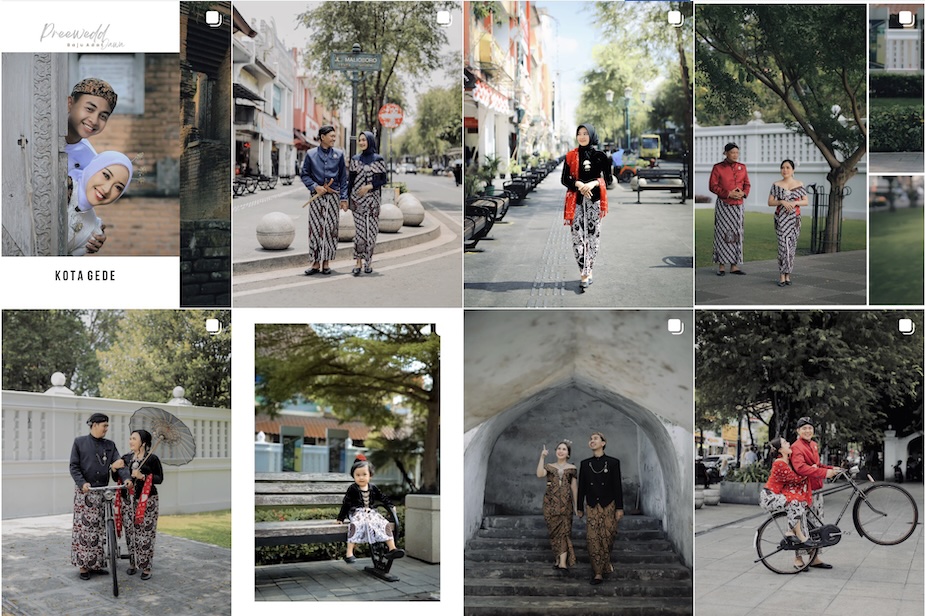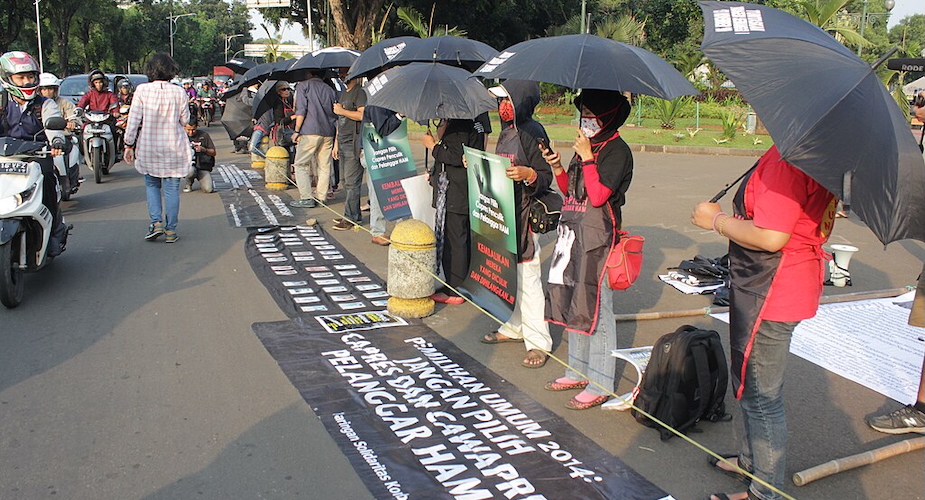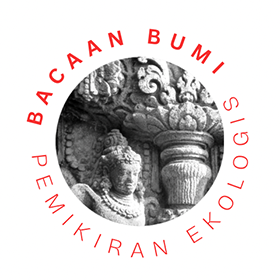Panas dalam can kill, but it can also be cured by a phone call
Brooke Nolan
Akbar and Eka live in a small village on an island in Southeast Sulawesi. The island, Wawonii, has a population of approximately 30,000 people. Like most of the people of Wawonii, Akbar and Eka are farmers. Rice, cacao, cashews, coconuts, beans and corn are their main crops. In the evenings, Akbar catches fish in his small wooden boat for the family’s dinner.
By 8am on a Monday, Akbar has usually been working in his fields picking cashews, clearing overgrowth or planting seeds for at least an hour. Today, however, he is still lying on his bed, having barely slept the night before. He has a fever. He is wearing the same thin jacket and sarong that he has been wearing since he started getting hot and cold shivers a few days ago. Akbar is suffering from panas dalam – literally, ‘heat inside’.
Akbar hasn’t washed for three days. He limps. He hasn’t eaten much more than a few boiled bananas since he became ill. He has an open wound on his calf. A pus-like substance leaks out of it. On the sole of one of his feet are many clusters of small red-brown dots. ‘The heat wants to escape’ Akbar says, pointing to his calf and the sole of his foot. ‘Akbar has panas dalam’ says his wife, Eka. ‘Doctors call panas dalam sarampa (measles). Here we call it me’apu.’
Akbar says that panas dalam is not infectious. Going to the clinic or taking medicine will not cure panas dalam; the body must cure itself. ‘Panas dalam is from malaria. Only once the heat has exited the body is the person cured,’ he explains. ‘If the heat doesn’t leave the body, or if it leaves and returns, the person suffering from panas dalam can die very quickly.’
A question of balance
As in many parts of Indonesia, local people on Wawonii often talk about the affliction of panas dalam. But what is it? How is it caused? How is it cured? The answers to these questions are as diverse as they are indeterminate. But instability in temperature, direction and balance are three features consistently mentioned in discussions about panas dalam.
As in many parts of Indonesia, and indeed across Asia, health is viewed in terms of a balance (or lack of balance) between social, spiritual and physical elements. A few days earlier, Akbar’s elderly mother had become so ill that she had to be taken to the hospital in the provincial capital, Kendari. This happened at around the same time as the pus began oozing out of Akbar’s calf muscle and the dark red dots appeared on his foot. Akbar was getting sicker because he was thinking about his mother. His wife called their son, Iskandar, to find out how her mother-in-law was faring. ‘Thank God, his mother is improving now. Once he knows this, Akbar will improve too,’ she says.
Balance in one’s physical surroundings is also considered to be important. Local people say panas dalam usually occurs during the shift between dry and rainy seasons when the weather is unpredictable. These conditions disturb the body’s internal equilibrium. As well as changes in temperature, wind exacerbates the onset of panas dalam. The ‘eastern wind season’ lasts from May to August, while the winds blow from the west from December to March. People say windy nights bring on the types of hot and cold shivers that Akbar is suffering from. Almost all the villages in Wawonii are within walking distance of the coast and are unprotected from strong winds coming in from the sea.
Among the other causes of panas dalam is an over-consumption of hot foods. These foods may be hot in temperature, such as fried snacks, or those considered to have hot characteristics, such as turtle, durian, jackfruit, garlic or mango. Some say panas dalam begins with gastric secretions that spread from the digestive organs upwards to the oesophagus. It is therefore recommended that sufferers sleep with extra pillows in order to keep the head high. It is also important to regulate the temperature of their surroundings. Eka usually fries food in the kitchen inside the house. Today, however, she is frying food over an outside fire. ‘If someone has panas dalam, we have to fry food outside. If not, the increased heat inside the house causes the illness to worsen,’ she says.
And so, just as the excess heat in the body of someone afflicted by panas dalam must be expunged, so too the excess heat in a house whose occupants have panas dalam must be expelled. There are two elements at work here: action and metaphor. The close association between houses and bodies, where the house is often conceived as a metaphor for the body, is common in many Eastern Indonesian societies. In Sumba, for example, the death of a relative is expressed in ritual speech as the destruction of the clan house. In Sulawesi, tongkonan houses are also closely linked to Torajan identities and the bodies and spirits of their ancestors. Among the Ngaju Dayak of Central Kalimantan, houses are associated with femaleness and are believed to possess souls.
Back to the fields
At home, Akbar is still lying on the bed in his sarong. Eka tells him about her conversation with their son, Iskandar, emphasising the improvement in Akbar’s mother’s health. A faint smile appears on Akbar’s face. That evening, he drinks tea and eats sinonggi, a Kolaka speciality made from sago and fish. Then he returns to bed.
The following morning, Akbar says he is beginning to feel better. On the sole of his foot, the red-brown dots are fading. The pus on his leg has dried up. ‘The panas dalam is leaving my body,’ says Akbar. ‘Tomorrow I’ll return to my fields to pick cashews.’
Although to outsiders panas dalam seems to describe a rather obscure combination of symptoms and situations, to Indonesians in places like Wawonii panas dalam is a frightening and potentially fatal illness. In seeking to understand how Indonesians see the relationships between their bodies, their health and their environments, we gain a glimpse into the way Indonesians perceive themselves in the world and the world within themselves.
Brooke Nolan (borneobrooke@gmail.com) is a PhD student at the University of Western Australia. She is currently undertaking PhD research in Wawonii, focusing on maternal mortality, women's agency and local concepts of health and illness.

